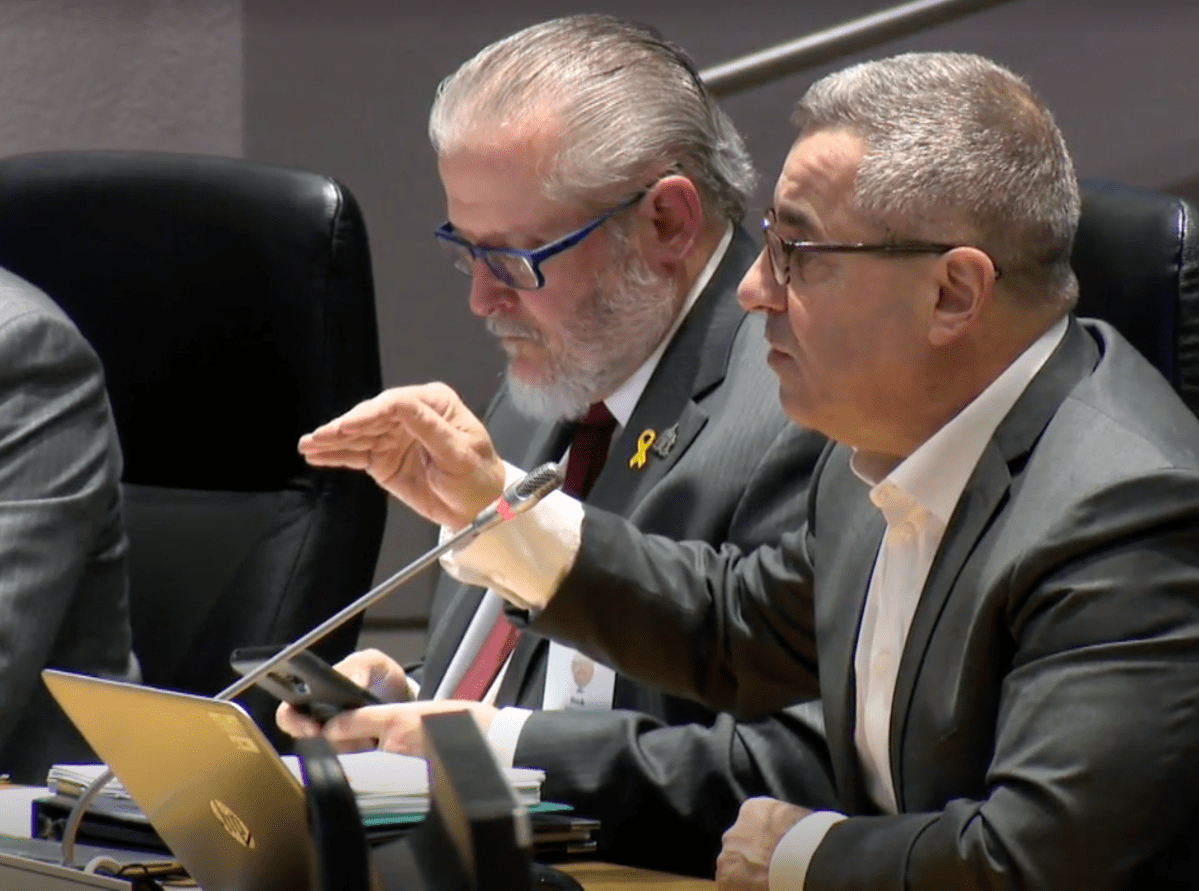The City of Ottawa is exploring how to limit its spending and perhaps shrink its operations to only essential services as the ongoing novel coronavirus outbreak threatens its finances, workforce and ability to rally resources to respond to the pandemic.

The city’s carefully-planned revenues are “already declining at a rapid pace”, according to the city manager, who said Wednesday that the spread of COVID-19 has thrown senior city staff into uncharted waters.
“This is the first time I can remember, in the 25 years I’ve been involved in emergencies, that it’s very difficult to project what the circumstances are going to be to be able to mitigate and what steps we have to take to be able to recover,” Steve Kanellakos said.
“It’s changing day-to-day and we’re trying our best to look forward and focus on the right things.”
The top bureaucrat’s remarks came soon after Mayor Jim Watson declared a state of emergency in the City of Ottawa over the novel coronavirus during council’s first virtual meeting.
Two major resources the city is mobilizing to protect in the face of COVID-19 are the city’s cash flow and its workforce, Kanellakos said on Wednesday. Revenues from multiple sources — ranging from transit fares to income from renting city facilities — are decreasing as people follow health officials’ orders to stay home and away from other people.
Wendy Stephanson, the city’s chief financial officer, said she’s already started a “deep dive” into the city’s expenses to see where spending can be trimmed, stopped or deferred to a later date.

Get daily National news
The city has also struck a “business continuity” task force made up of “key senior leaders” to work the “longer-term view” for Ottawa — namely financial forecasts, schedules for staff work rotations and supports for essential city services and emergency needs.

And, along with the cities of Toronto, Vancouver and Calgary, the City of Ottawa is working with Ernst Young on “recovery plans” for those municipalities, Kanellakos said.
As for its workforce, the city expects that more and more of its employees won’t be able to report for work as the novel coronavirus spreads and peaks. City staff may themselves become ill or have to self-isolate if they had close contact with a sick person, Kanellakos said.
In preparation for this, the city is exploring how it might “contract” its services to “only the most essential things we need to keep the city going,” Kanellakos said.
The city is also looking into a number of measures to try and protect municipal employees. For example, emergency responders have asked for hotel rooms in case they can’t be around someone in their household and managers are looking at building teams to rotate on and off, senior staff said.
Social distancing poses extra hurdle in emergency planning
As it responds to the coronavirus, the city is also grappling with an additional challenge it’s never had when managing recent climate-related emergencies: the community can’t physically rally together like it usually does.
In order to curb the spread of the virus, health officials have urged all residents to limit their non-essential outings and if they do have to go out or go to work, to maintain a two-metre distance from other people. Anyone who tests positive for COVID-19, has symptoms of COVID-19 or who recently returned from travel abroad is asked to self-isolate for 14 days.
“The whole social distancing and the isolation between people makes it very difficult to draw on resources to actually manage the emergency, which is what makes it different from any other emergency,” Kanellakos told reporters in a teleconference after council.
“There’s a lot of precautions. … so we have to plan very differently for how we’re getting resources up to the most vulnerable.”

Social distancing would likely also complicate the city’s response to another curveball it might be thrown during the COVID-19 outbreak: seasonal flooding.
The city is taking a number of preparations for potential flooding now and is assessing what resources it will have available in the event major floods occur, Kanellakos said.
He told council the snowpack is in line with, or lower than, normal levels for this time of year. But, he warned, this was the case in early April last year and the situation “changed dramatically in three weeks.” The 2019 floods prompted Watson to declare a state of emergency so the city could help the affected areas of the city more quickly and call in the military for help.
Watson noted Wednesday it might be tricky to have large numbers of personnel and volunteers filling sandbags like they did last year with the physical distancing measures in place today.
Any floods this spring would likely have implications as well for Ottawa Public Health, who is leading the city’s response to COVID-19.
The health unit was heavily involved in the city’s response to the major floods last year, using workers and resources to check in on affected residents and distribute health and safety messaging.
Watson’s also referenced the risk of seasonal flooding in justifying the need to declare a state of emergency on Wednesday.









Comments